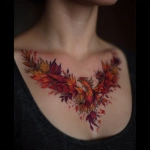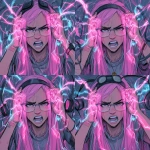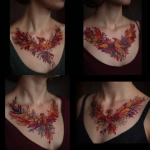Explore the Best AI Image Gallery

Beyond the Canvas: Wearable Tech as a New Frontier for Creativity
The world of creativity has always been fueled by innovation. From the advent of the brush to the invention of the printing press, each technological leap has ushered in a new era of artistic expression. Today, wearable technology stands poised to revolutionize the creative landscape, offering artists, designers, and innovators an unprecedented toolkit to explore uncharted territories.
Imagine a future where:
- Sculptures are crafted by manipulating light projected onto 3D-printed forms controlled through gesture sensors on wearable devices.
- Musical compositions evolve in real-time, responding to the wearers emotions detected through biofeedback sensors embedded in their clothing.
- Interactive installations allow viewers to become part of the artwork, influencing its direction through movement and interaction captured by wearable cameras and sensors.
This is not science fiction; these possibilities are already taking shape as wearable tech continues to evolve.
Wearable Tech: Transforming Creative Tools
The integration of technology into everyday wearables has opened up exciting avenues for creative expression:
1. Augmented Reality (AR) and Virtual Reality (VR):
AR overlays digital elements onto the real world, while VR immerses users in entirely virtual environments. Wearable headsets and glasses are increasingly used by artists to:
- Create interactive installations that respond to user movement and interaction.
- Design immersive virtual worlds for storytelling, performance, or artistic exploration.
- Visualize 3D models and designs in real-time, enhancing the creative process.
2. Biofeedback and Sensory Integration:
Wearables equipped with biofeedback sensors can track physiological data like heart rate, muscle activity, and brain waves. This opens up new possibilities for:
- Creating art that is directly influenced by the wearers emotional state or physical movements.
- Developing interactive experiences that respond to users biofeedback, creating a personalized and immersive journey.
3. Gesture Recognition and Motion Capture:
Wearable sensors can track body movements with high accuracy, enabling:
- Real-time control of digital art tools and environments through hand gestures.
- Capture of intricate dance choreography or physical performances for digital preservation or artistic manipulation.
Ethical Considerations: Navigating the New Terrain
As wearable tech becomes more integrated into creative practices, its crucial to address the ethical implications:
1. Data Privacy and Security:
Wearables collect vast amounts of personal data, raising concerns about privacy and security. Its essential to ensure transparent data collection practices, user consent, and robust cybersecurity measures.
2. Accessibility and Inclusivity:
The development and deployment of wearable tech should prioritize accessibility for users with diverse abilities. This includes designing interfaces that are intuitive and usable by people with visual, auditory, or motor impairments.
3. Algorithmic Bias and Fairness:
AI algorithms used in wearable tech can perpetuate existing biases if they are trained on biased data. Its crucial to ensure fairness and equity in the development and deployment of these algorithms to avoid discriminatory outcomes.
Future Trends: Shaping the Creative Landscape
The future of wearable tech in the creative industry holds immense potential:
1. Immersive Storytelling and Experiences:
Wearables will enable immersive storytelling experiences that blur the lines between reality and fiction, transporting users into captivating worlds.
2. Personalized Creative Tools:
AI-powered wearable tools will adapt to individual creative styles and preferences, providing personalized guidance and inspiration.
3. Democratization of Creativity:
Wearable tech will empower individuals from all backgrounds to participate in the creative process, fostering a more inclusive and diverse art scene.
As we venture deeper into this era of technological convergence, wearable tech is poised to reshape our understanding of creativity. By embracing innovation while navigating ethical considerations, we can unlock the full potential of these tools to empower artists, inspire new forms of expression, and transform the very fabric of the creative landscape.



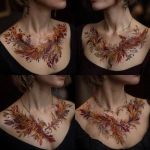
](https://images.ai-img.art/thumbnails/150/985b7bf314caa205e59a2c973e979ce77cf5b24ca39799fffe2e30ea7c79ef07.webp)

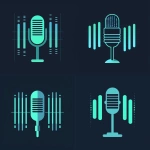


](https://images.ai-img.art/thumbnails/150/fe996254fcb758c1365f3a22783ee6112ed5e34579deb401de674b06938efb2a.webp)


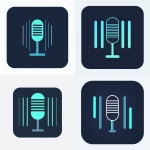
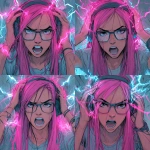



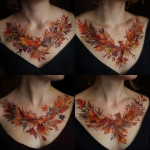


](https://images.ai-img.art/thumbnails/150/b94716d4b88da3e1ec3ab12162616a52ff5698251ac791ddf8478649889a0f47.webp)




](https://images.ai-img.art/thumbnails/150/469bffae134ea97666025052588e76bb4dd4b6b98c4888cfd7873929a73156ff.webp)
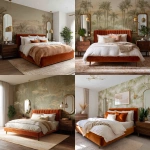



](https://images.ai-img.art/thumbnails/150/4c5bdb0a0a1f761a911521333b9e3463c885aa247b42d1d311a97f2aa2c513d2.webp)


](https://images.ai-img.art/thumbnails/150/4c67c727683a835917441757b71ace563950f9178fa4826e09a55cfb092ac715.webp)


